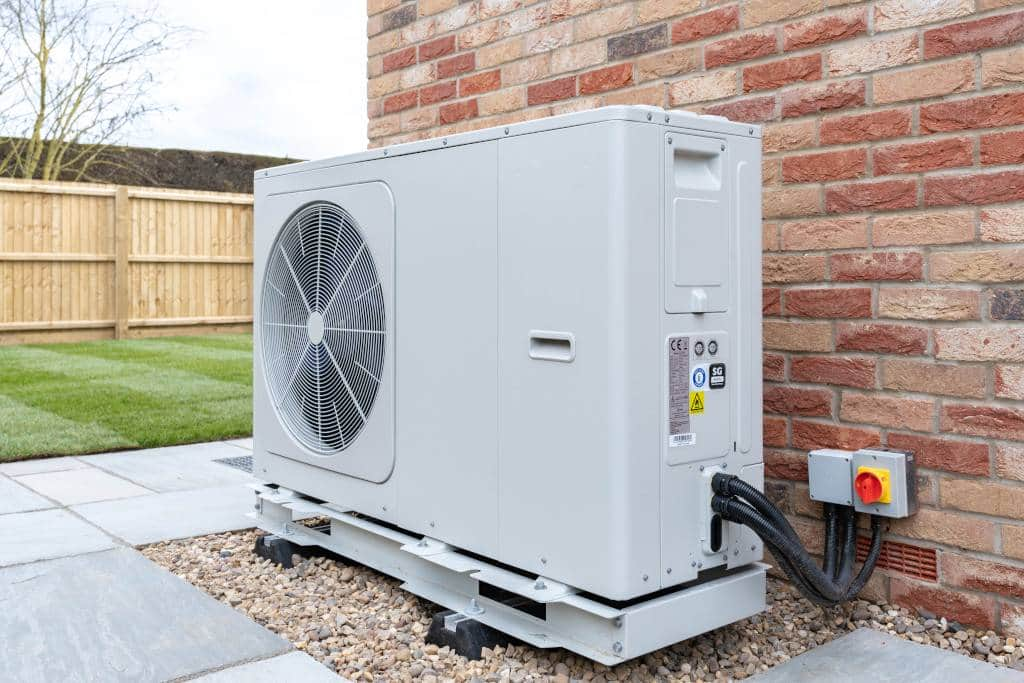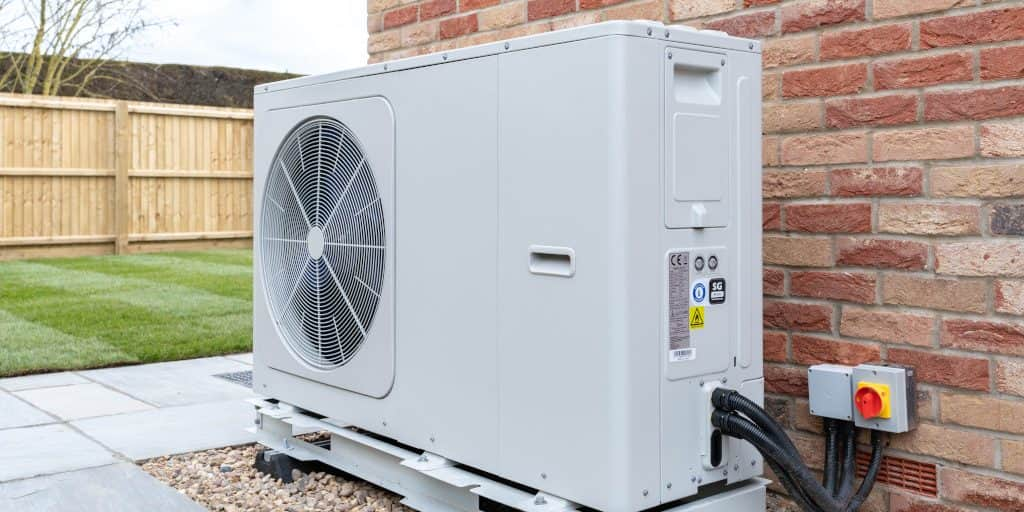
Unless you've been living under a rock, chances are you're familiar with the government's ambitious plan to transition the UK's natural gas supply to hydrogen to bolster environmental sustainability. While still in its exploratory phase, with new build bans on natural gas boilers set for 2025, extending this transition to existing homes remains a lengthy process. Consequently, homeowners contemplating boiler replacements are pondering the implications and weighing whether to opt for an efficient and readily available solution like heat pumps as their primary heat source. This article delves into the workings of heat pumps within central heating systems, evaluates their suitability for various homes, and examines their potential in aiding the UK's pursuit of Net Zero targets. All of which, will help you weigh up whether replacing your boiler with a heat pump is the right choice for you at this time.
How Do Heat Pumps Work Within The Central Heating System?
Air source heat pumps and ground source heat pumps are the most commonly used type for residential heating and cooling applications. Air source heat pumps extract heat from the ambient air outside the property and transfer it indoors to provide heating. They are generally more affordable and easier to install compared to ground source heat pumps, making them a popular choice for residential applications.
Ground source heat pumps utilise heat from the ground by circulating fluid through underground pipes. They tend to be more efficient and reliable in colder climates but typically involve higher installation costs due to the excavation required for the ground loop system. However, they can provide consistent heating throughout the year and are often preferred for larger properties or those with higher heating demands.
Ground source heat pumps are typically not suitable for homes in Greater London due to the need for ample outdoor space to install underground piping or the ability to dig deep boreholes. This requirement makes them impractical for most urban settings in the city. Given the suitability of air source heat pumps over ground source pumps among London homeowners, we will primarily centre around this type. So, how do air source heat pumps work within a home central heating system?
While heat pumps serve as a primary heat source like boilers, they operate on a different principle. Think of an air source heat pump as a reverse operation of an air conditioning unit. Just as AC units can both cool and warm air, a heat pump utilises this principle to extract heat from the air and transfer it to a water system, effectively heating it. This process involves connecting the heat pump to a heat exchanger, akin to the setup in a boiler, facilitating the transfer of energy into the heating system.
Simply put, air source heat pumps work by extracting heat from the outside air and transferring it inside to heat your home (and hot water) as part of a central heating system. Here’s a breakdown of how they work in five straightforward steps:
- Absorbing heat: The heat pump contains a refrigerant that absorbs heat from the outdoor air, even in cold temperatures.
- Compression: The refrigerant is compressed, which increases its temperature.
- Heat exchange: The hot refrigerant passes through a heat exchanger, where it transfers its heat to the water or air in your central heating system.
- Distribution: The heated water or air is then circulated throughout your home via radiators, underfloor heating, or air vents, providing warmth to your living spaces.
- Repeat process: The cycle continues as the heat pump continuously absorbs heat from the outdoor air and transfers it indoors to maintain a comfortable temperature.
Pros And Cons Of Air Source Heat Pumps
Air source heat pumps offer both benefits and drawbacks when it comes to heating and cooling homes, making them a topic of debate among homeowners and experts alike.
The positives:
- They are much better for the planet. They use renewable energy sources, such as the heat naturally present in the air, to provide heating and cooling for homes. Unlike traditional heating systems that rely on fossil fuels like natural gas or oil, air source heat pumps generate heat by transferring it from the outside air into your home, resulting in significantly lower carbon emissions. By reducing reliance on non-renewable energy sources, air source heat pumps help mitigate climate change and contribute to overall improvements in air quality. Plus, they are more energy-efficient than conventional heating systems, further reducing their environmental impact.
- Government grants of £7,500 are available for homeowners in England, Wales and Scotland upgrading to a heat pump. The Boiler Upgrade scheme supports the installation of heat pumps as part of the government’s efforts to promote renewable energy and reduce carbon emissions and provides a financial incentive to homeowners and businesses who install renewable heating systems like air source heat pumps.
- Certain models are compatible with solar panels, allowing for a more self-sufficient system that harnesses both renewable heat from the air and solar energy from panels.
- They offer versatility. Air source heat pumps can provide both heating and cooling, offering year-round comfort in homes regardless of the season.
The challenges:
- Upfront cost. Despite the availability of funding and government support, heat pumps can be more expensive to buy and install than it would be to replace your existing gas boiler, which may deter homeowners from investing in them. There are also the necessary changes to prepare your system for the change, including the work that you would have to do to your radiators, heating system, and insulating your property, much like assessing the best way to clear a sink blockage requires careful consideration of the existing setup.
- Running costs. You are not burning gas, but heap pumps consume a lot of electricity which is more expensive.
- Space requirements. Certain properties may face limitations in terms of available space, access, or surrounding conditions suitable for installing a heat pump. Additionally, homeowners may need to consider making modifications to their homes to accommodate the installation of a heat pump. These units are typically large and may require floor space comparable to that of a refrigerator, making it challenging for those living in flats or properties with limited space to accommodate them. It's important to envision the size of a heat and factor in the space requirements accordingly.
- Retrofitting challenges. To get the best efficiency from heat pumps, your home will need to retain a lot of its heat through good insulation. Retrofitting an existing home with an air source heat pump may require modifications to the home's insulation and heating distribution system, which can add to the overall cost and complexity of installation.
Heat pumps operate at lower temperatures, necessitating proper insulation of the property. You may have noticed telltale signs of insulation enhancements on houses, such as recessed rainwater downpipes or deep window reveals without outward-projecting windowsills. These modifications often indicate exterior insulation, a solution to bolster the property's thermal efficiency.
When retrofitting heat pumps into older properties, challenges often arise due to inadequate insulation and undersized radiators. Retrofitting may require either increasing radiator sizes or enhancing insulation, both of which impact indoor space. On the other hand, in new constructions with superior insulation and tailored heating system designs, integrating heat pumps is more straightforward. Therefore, while older properties may face obstacles, new builds offer an ideal environment for maximising the efficiency of heat pump technology.
- Maintenance requirements: Just like boilers, air source heat pumps require regular maintenance to ensure optimal performance and longevity, including cleaning filters, checking refrigerant levels, and inspecting outdoor components. Many homeowners assume this isn’t required, but this is not the case.

Oliver Osmore, Director of Maintracts Services, concludes:
“Currently, there's not much tangible benefit for homeowners to invest in this, especially not for older properties, which make up the majority of the housing in places like London. We've encountered a few individuals interested in installing them purely for environmental reasons, opting for electric boilers or heat pumps. However, this represents only a small fraction of homeowners over the past five years. It's likely that there are more people interested but in London the properties, particularly flats, aren't always well-suited for them.”
There is no doubt that air source heat pumps offer homeowners a compelling opportunity to reduce their carbon footprint and embrace renewable energy sources. Their utilisation of naturally occurring heat in the air, along with compatibility with solar panels, underscores their environmental friendliness. Plus, government grants and incentives in England, Wales, and Scotland provide further impetus for their adoption.
However, challenges such as upfront costs, higher running costs compared to gas, space requirements, retrofitting complexities, and maintenance needs complicate the decision. While newer properties may facilitate easier integration, older homes may require modifications to enhance efficiency. Nevertheless, the superior energy efficiency of heat pumps, outstrips A-rated gas boilers, making them a pivotal component in achieving net zero emissions. By transitioning from gas to electricity, heat pumps significantly reduce carbon footprints, aligning with the UK's ambitious sustainability objectives. Despite these advantages, comprehensive evaluation of both benefits and challenges will be essential for making an informed decision about your home’s energy future.
If the Maintracts team can assist with any of your heating and plumbing requirements, we’d love to help. Contact us at your convenience and we can chat things through.

